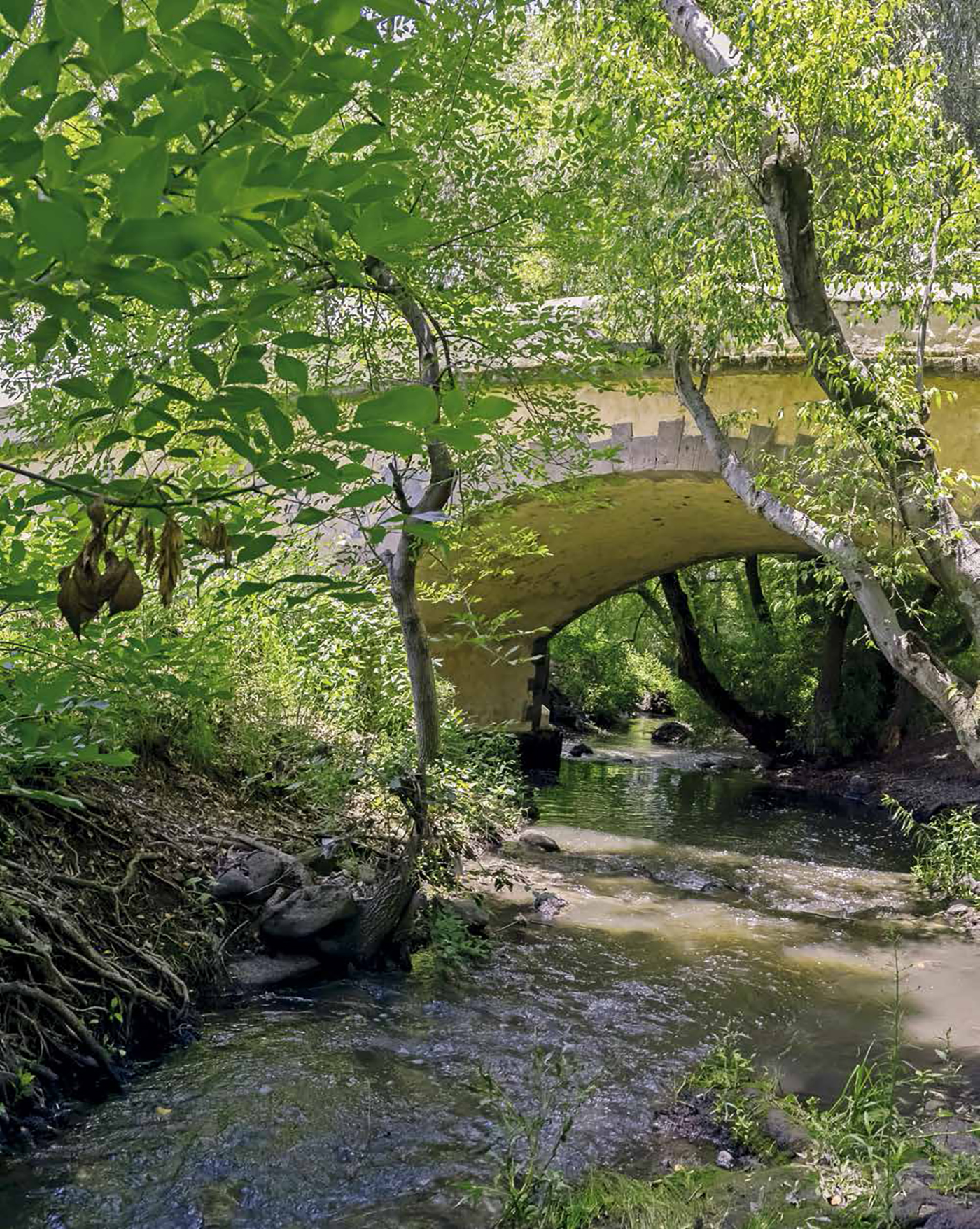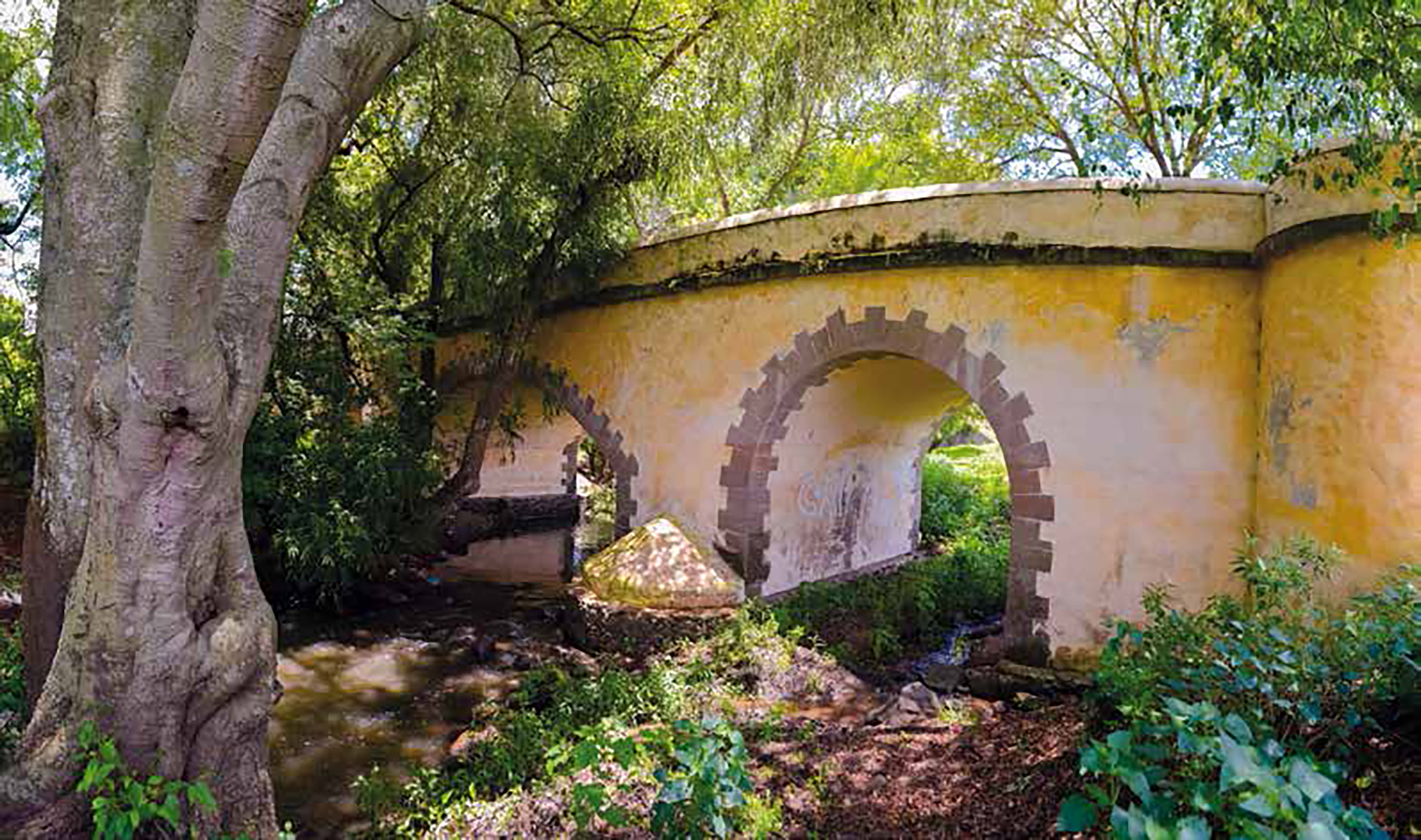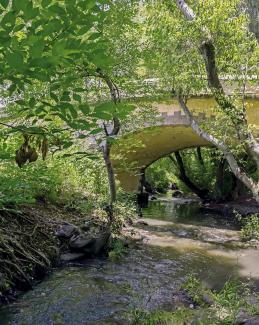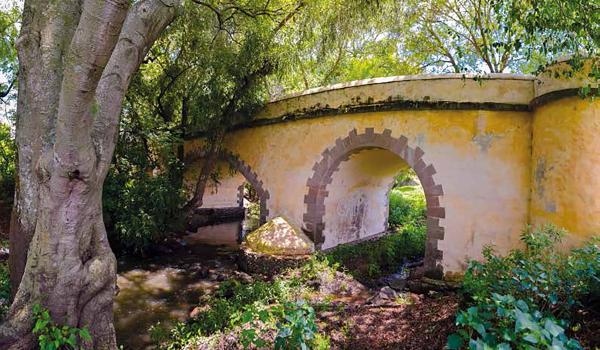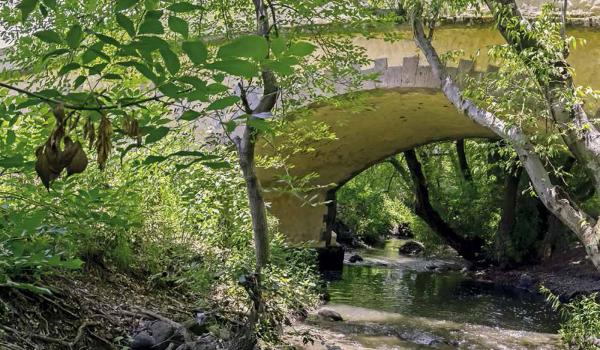Puente de Atongo
Route element
Puente de Atongo
During the 18th century, there was a significant surge in the construction of bridges. These structures aimed to overcome the topographical obstacles and rivers located at key points along the Royal Inland Road.
On the Royal Inland Road to Querétaro, several masonry bridges were built with typical cobblestone paving of ancient road constructions, such as those located in Jilotepec, Arroyozarco, and Atongo. While the opening and expansion of mule tracks for cargo transport was necessary, so was the implementation of measures for the crossing of people and goods during rainy times, which influenced the construction of the aforementioned bridges.
The Atongo Bridge is located near the town of Aculco, a key transit hub and important for those traveling along the Royal Inland Road due to its activities related to muleteering and hospitality. This structure features a sandstone semi-circular arch, while the rest of the bridge is made of masonry. On the arch, a cornice can be seen, and in the center of one of its walls, there are remnants of a small sandstone pillar that once held a medallion; it is likely that this medallion bore an inscription indicating the construction or intervention date. The bridge is currently in good condition and remains functional under favorable conditions.

